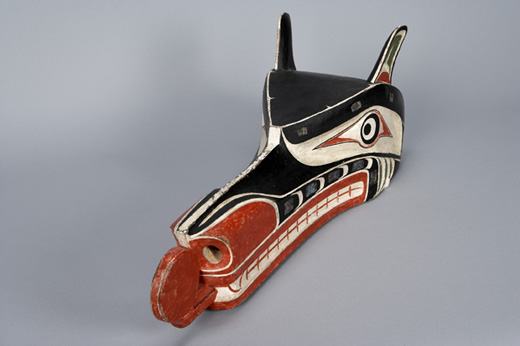

In the early 1980s, a few years after I began working as the first conservator at the UBC Museum of Anthropology in Vancouver, Canada, I was asked to agree to a loan of pieces that would be handled and worn in a very non-museum environment. These objects, from the museum’s permanent collection, were wanted for use by a First Nations community member. They would be danced at a potlatch. Several other requests involving use soon followed. A few of the asked-for pieces were old; the others were contemporary and being loaned back to the artist who had created them. Nonetheless, my obligation as a professional conservator, especially clear in the early 1980s, was to serve as an advocate for the preservation of cultural property. As everyone has experienced, using something can result in wear and loss to the original physical object, and I saw the loaning of museum collections for dances and events as clearly being in opposition to the professional codes of ethics at the time that are adhered to by conservators. This was, remember, also almost a decade before NAGPRA (Native American Graves Protection and Repatriation Act) in the US, and the Museums and First Peoples Task Force report in Canada, “Turning the Page”.
The professional dilemma of how to resolve the apparently opposing needs of First Nations people and my responsibility as a conservator was also a personal quandary. My sympathies lay strongly in both camps. Was I ready either to be drummed out of the Museum of Anthropology for not signing the loan forms or to be drummed out of my profession for willingly putting museum objects at physical risk?
At the time, I saw that in this particular situation preserving the physical integrity of an object and preserving its conceptual integrity were undeniably in conflict. In attempting to resolve this conflict, I began to think about the meaning of “preservation,” the meaning of “use,” the meaning of “object,” and the meaning of the phrase “integrity of the object.” Conservators believe that their values are consistent with the best methods of preservation. How does this fit with the kind of preservation represented by dancing a mask or wearing a weaving: cultural preservation? What about physical materials deteriorating through use and that my profession is dedicated to preventing damage to, and conserving, material culture –and then contextualizing these statements and the First Nations requests to museums in the history of colonialism, the history of museums, and the values represented by conservation and museums, past and present? Further, when I use words like “cultural property” or “collections” or “objects,” what am I telling their originators about their heritage? What are “damage” and “deterioration”, for that matter? The results of research to answer these and related questions have been published in my 2002 book, Preserving What is Valued: Museums, Conservation and First Nations (University of British Columbia Press), and various articles in the conservation literature. Today the situation I perceived initially as a conflict has developed into more of a “win-win” situation, but by no means has it been resolved in all places: not for conservators, museums, or indigenous peoples.
Miriam Clavir is Conservator Emerita and Research Fellow, University of British Columbia Museum of Anthropology, Vancouver, Canada.
